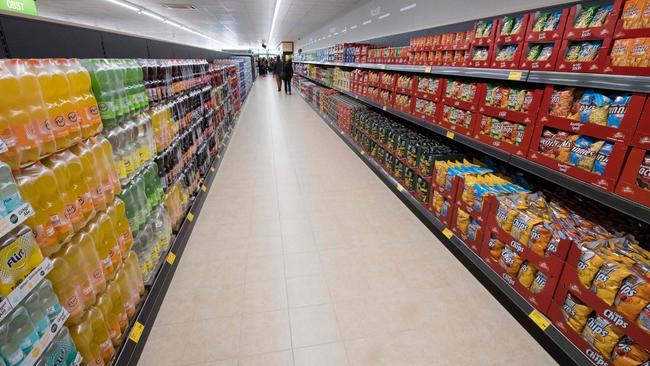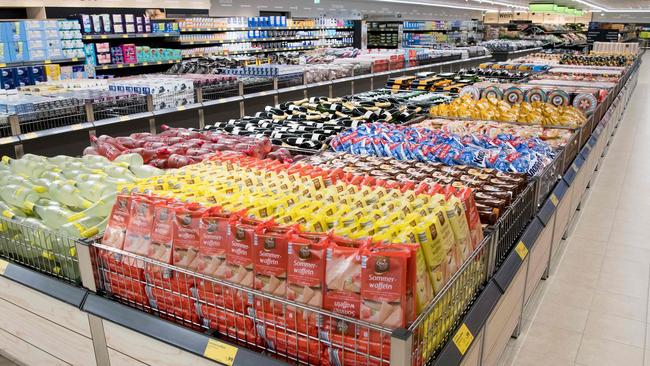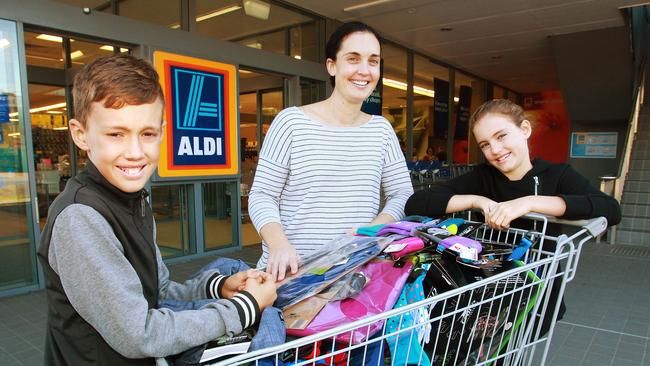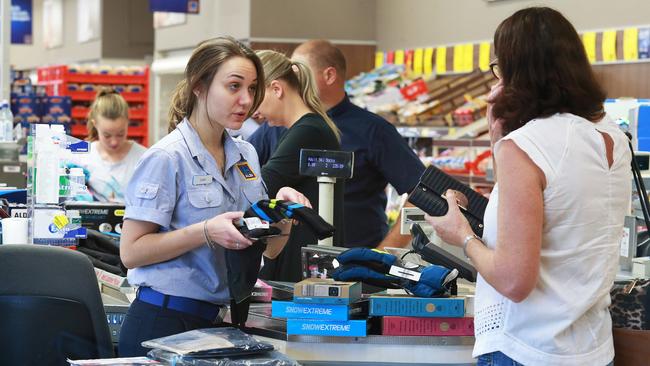Coles fresh food hurting ‘unstoppable’ Aldi
ALDI is now nearing a “tipping point” in Australia, a major new report says, but Coles is putting up a fight in one key area that could spell trouble.
ALDI is now an “unstoppable force” in Australia, but Coles’ aggressive discounting and fresh food quality has stemmed the losses over the past 12 months, a major new report says.
While the German discounter has been winning customers at an accelerating rate over the past two years, the number of customers visiting for their “main-shops” has not grown at the same rate, according to UBS.
“[Is] Aldi an unstoppable force? We think so, but Coles is doing a good job of slowing Aldi’s growth,” UBS retail analyst Ben Gilbert wrote earlier this month.
“Fresh appears to be Aldi’s main impediment to lifting share of ‘main-shops’, with fresh quality the number one driver of all (and Aldi) shoppers to store, and the category shoppers tell us is most in need of improvement at Aldi.”

On the east coast Aldi now has 56 per cent penetration, up at a rate of 200 basis points a year since 2014. The biggest driver has been a broader customer base as wealthier shoppers come on board.
Aldi is now the most profitable supermarket in Australia with estimated margin of 6 per cent. In the event of a price war, which UBS puts at 25 per cent probability, Aldi will maintain its prices at about 20-25 per cent cheaper than Coles and Woolworths.
UBS is predicting Aldi will reach $10.6 billion in sales by 2019 — up from $7 billion today — which would amount to 15 per cent of cumulative annual growth and a doubling of sales since 2013.
Driving that growth will be three things — sales growth of 3 per cent a year, “underpinned by rising penetration and improved execution (fresh in particular)”, 20 to 30 new east coast stores a year adding around $600 million of sales, and expansion into South Australia and WA adding $340 million of sales a year.

“Aldi is nearing a tipping point, but needs to get fresh right.” Mr Gilbert wrote. “The tipping point in the UK proved to be when the discounters (Aldi and Lidl) lifted share of main shops over 10 per cent.
“Aldi is now at 8 per cent in Australia. The key to lifting this will be fresh perception, which remains the number one category for improvement.”
UBS is predicting Aldi could take as much as 16 per cent share of main shops by 2019. Coles, Woolworths and Metcash will lose between $209 million and $476 million of sales a year, with Metcash most at risk.
Coles will lose about $332 million in sales a year over the next three years, while Woolworths will lose around $476 million, the report argues.

“Woolworths has been the universal giver of sales over the past 12 months,” he wrote. “Consistent with market knowledge, Woolworths has lost its way and this has been reflected in it losing share of main shops, shopper frequency and weekly spend.”
If the majors can stem the leakage to Aldi by slashing prices, differentiating on key lines and improving fresh food, UBS estimates there is between $430 million and $1.3 billion in sales available for the taking.
Consumer surveys show that while Aldi’s scores have improved, they remain below peak 2010 levels, which reflects the “broader customer base whose shopping expectations are higher and the competitive set (Coles in particular) who are executing better and more focused on Aldi”.

“Long queue times were a key issue in 2014; this appears to have eased now and is no longer the primary driver of negative scores,” Mr Gilbert wrote. “We believe the significant increase in store numbers has resulted in less ‘over trading’.”
The main concern is the deterioration of Aldi’s “service” score over the past six years. In 2010, 20 per cent of shoppers rated “good service” as a key driver of Aldi’s positive rating. That has fallen to 7 per cent.
“We believe this in large part reflects the step up in investment at the competition (led by Coles) in recent years,” the report said.




